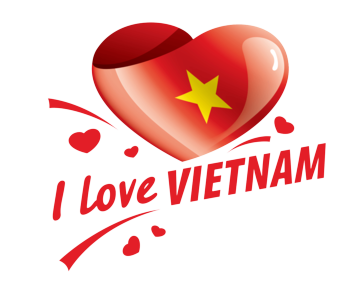Tractor, cyclo is a famous means of transportation in Southeast Asian countries in general and Vietnam in particular. Up to now, cyclos are still especially favored by foreign tourists when visiting Vietnam. Let’s learn more about these cyclos.
What is a cyclo?
Cyclo, in French called cyclo. This is a type of vehicle with the power source located behind to propel the passenger-carrying part at the front. The power source here can be human power ( pedal cyclo ) or engine ( motorized cyclo). This is completely different from rickshaws. Currently, the number of cyclos is not high, you will mainly encounter them in large cities with many tourists such as when traveling to Hanoi, Saigon, or Hue.
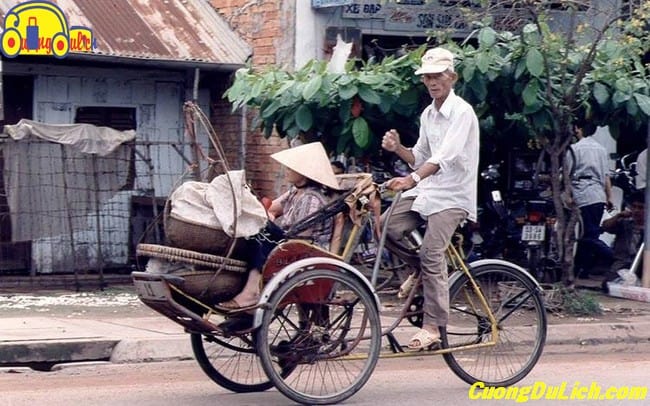
Before delving deeper into cyclos, let’s learn a bit about the vehicle that pulls them, which is the hand-pulled cart or simply called a cart.
Hand-pulled carts in Vietnam in the past
First of all, the hand-pulled cart or hand-pulled cart in the past was originally called “Jinriekishaw,” meaning human-power-vehicle. There are many different theories about the first inventor. One source claims that the hand-pulled cart was made by an old Japanese man with a paralyzed leg around 1868. Another theory states that Akika Daicouke in Tokyo made it in 1870. Another theory recounted by an Englishman says that American pastor Goble made it in 1867. Regardless of the theory, shortly after, there were about 42,000 hand-pulled carts circulating in Tokyo.
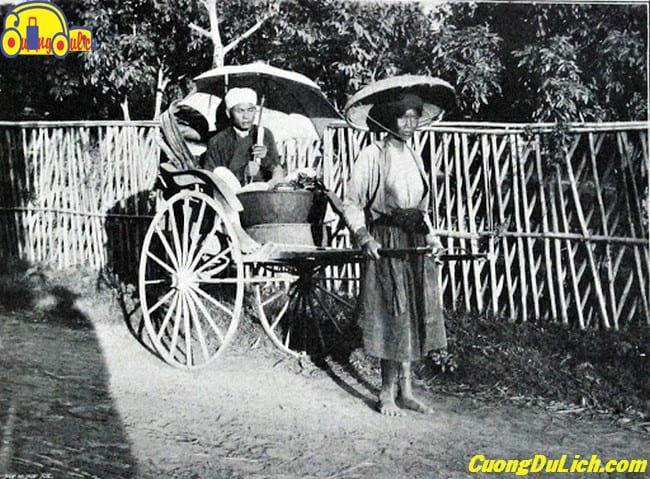
The invention of the rickshaw was like a transportation revolution at that time. A few years later, it was introduced to China, the Indochinese Peninsula, Malaysia, and was favored by the local people of these countries. Since the appearance of the rickshaw, the poor had more job opportunities and rickshaws operated from urban areas to rural areas. Over time, the rickshaw was improved in its structure, with rubber-coated wheels, springs between the wheels and the seat, and added decorations for a more elegant appearance…
The rickshaw became a common means of transportation for both the nobility and the poor.
Pedal rickshaw
While hand-pulled rickshaws were popular, around 1934 there was a breakthrough in transportation. This was the appearance of the pedal rickshaw in Saigon, and the number of rickshaws increased rapidly around 1939. In Hanoi, pedal rickshaws were not yet common. Pedal rickshaws from Phnom Penh, Cambodia, were imported to Saigon. The pedal rickshaw was manufactured by a Frenchman named P. Coupeaid and first circulated in the capital of Cambodia.
Perhaps the pedal rickshaw is a mechanical combination of the hand-pulled rickshaw and the bicycle. The pedal rickshaw has 3 wheels, two front wheels and one rear wheel. The position of the 3 wheels creates a stable base on the ground when moving. The two front wheels bear the weight of the passenger and make it easy to steer left or right. By applying bicycle techniques, the pedal rickshaw greatly saves energy and increases speed. In terms of transportation mechanics, the pedal rickshaw is designed like a bicycle model with 2 gear wheels and a chain, with ball bearings between the wheels. With these new techniques, the pedal rickshaw requires less effort than hand-pulled rickshaws for both the rider and the passenger.
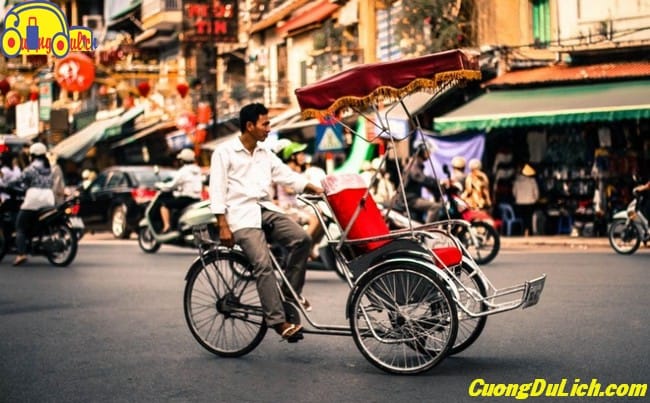
When first introduced, passengers were afraid of the danger because they had to sit in front and bear all risks. Later on, people favored it for its safety and the ability to carry two people along with luggage. Cyclos do not cause noise like motorized vehicles, keeping the environment cleaner compared to horse carriages of the same era. Cyclos became widely popular and spread to northern provinces. Vietnamese people use cyclos more than rickshaws because with rickshaws, the laborer stands in front, witnessing all the hardships passengers endure. With cyclos, the laborer sits behind and pedals, passengers do not feel guilty as the laborer, despite being poor, exerts effort for a living.
Motorized cyclos
Some time later, motorized cyclos appeared, manufactured by the French company Peugeot to operate in Saigon, and later flooded into Laos and Cambodia. Motorized cyclos were improved in all aspects and equipped with engines. The drivers of these vehicles wore sunglasses and helmets. They were relatively respected in society because they worked directly with the mechanical era. At that time, cyclo drivers were looked down upon and considered as coolies! The cyclo (cyclo) was invented by a Frenchman from Charente named Coupeaud in 1939.
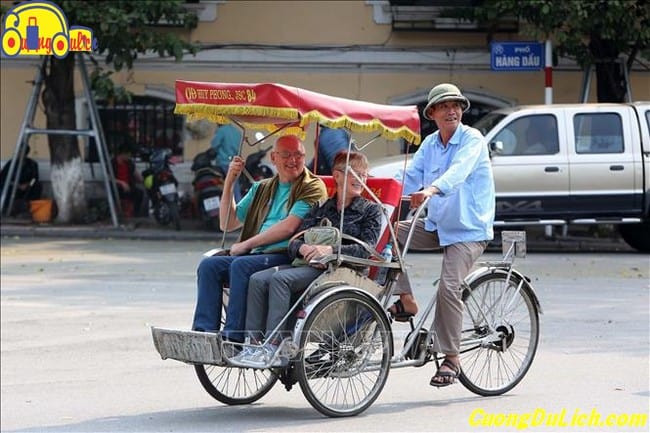
To advertise this new mode of transportation, Coupeaud organized a journey with a three-wheeled passenger vehicle from Phnom Penh to Saigon, with two hired cyclists taking turns pedaling continuously for nearly 200 km in 17 hours and 23 minutes. Statistics show that by the end of 1939, Saigon had only 40 cyclos, but by 1940, this number had increased to 200. In February 1941, the famous couple Bay Vien and a Frenchman named Maurice established the Mauvien company (combining the names of the two) with 30 exclusive cyclos in the Cholon area… From the early 1960s, motorized cyclos appeared in Saigon, with 2-stroke engines and using parts, components, and engines from the French motorcycle brand Peugeot, 125cc, running on a petrol-oil mixture.
Cyclo Riding Profession
Returning to the present day, motorized cyclos are no longer seen on the streets, but pedal-powered cyclos and the profession of cyclo riding still exist in Hanoi, Hue, Ho Chi Minh City… Cyclo riders must endure many hardships daily, facing rain and sun, dust and wind day and night. Cyclo riders are likely well-informed about the happenings of the streets, rice prices fluctuating, companies facing losses, debt collectors harassing… Cyclo riders seem to have an honest view and understanding in a society full of turmoil. The cyclo riding profession lacks status and is often looked down upon by society. However, this profession still survives on the fringes of society. In times of poverty, many turn to cyclo riding to make a living, to put food on the table and clothes on their backs.
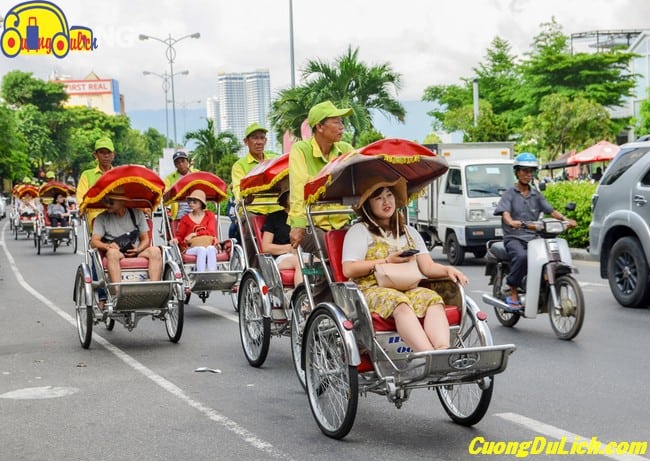
In the city of Saigon during the difficult years of 1980-1982, the cyclo driver team consisted of people from all walks of life, including intellectuals, workers, farmers, and the poor. Those who were unemployed only needed a small amount of capital to buy a cyclo and start pedaling. Many people have been driving cyclos for over 10 years. Although considered “poor” for pedaling cyclos, this profession ensured the livelihood of cyclo drivers. Nowadays, on average, cyclo drivers can earn around 6,000,000 Vietnamese dong per month or more, equivalent to the income of an average industrial worker which is 7,000,000 – 8,000,000 Vietnamese dong per month. This is not to mention cases where cyclo drivers who can speak English with foreign tourists can earn an average of 15,000,000 dong or more.
Today, in major cities in Vietnam, cyclos are mainly used to transport foreign tourists. Many streets in cities have banned the circulation of cyclos. Many people have switched professions, such as becoming motorbike taxi drivers. Additionally, a new form of cyclo has emerged in daily life: toy cyclos for children. In other words, although not yet included in museums, cyclos have adapted to modern life, becoming a toy for children!
The future of cyclos in Vietnam
The social demand for time and transportation methods is increasing. Cyclos cannot meet these requirements. Moreover, almost every family in the city owns a Honda motorcycle, and taxi and bus services have been introduced. Perhaps the profession of cyclo driving is entering a new phase – will it continue to exist in society? The answer is difficult to predict because many people appreciate the simplicity and spaciousness of a cyclo. Almost every foreign tourist visiting Ho Chi Minh City for the first time wants to ride a cyclo just to experience it! This is how cyclos have become famous as a means of transportation for tourists when they come to the “far eastern pearl”.
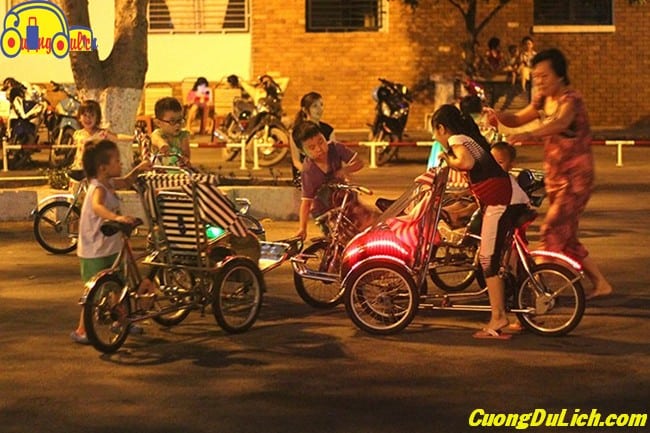
Cyclos are present everywhere, at all times, witnessing the ups and downs of the country in the modern history of Vietnam. The simple figure of the cyclo resembles the Vietnamese people, the cyclo is like the embodiment of Vietnamese life or synonymous with poverty. The evolution of society requires the cyclo to change, to transform into extremely fast vehicles rushing to serve society, so that people forget the “image” of the cyclo dragging behind the slow reality of Vietnamese society.
